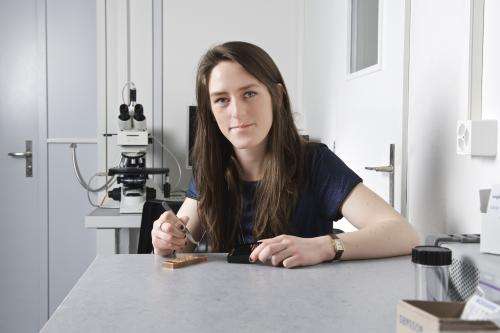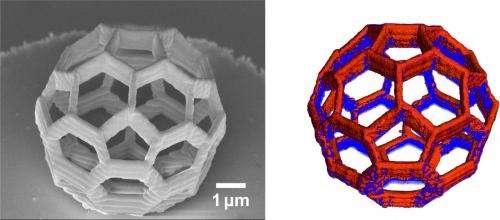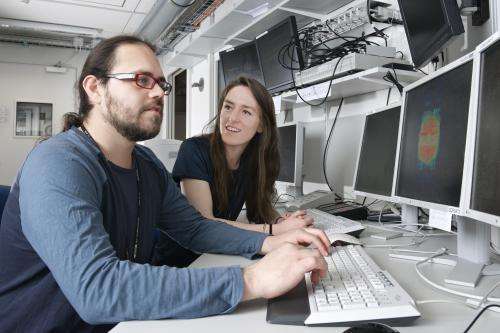3-D images of tiny objects down to 25 nanometres

Scientists at the Paul Scherrer Institute and ETH Zurich (Switzerland) have created 3D images of tiny objects showing details down to 25 nanometres. In addition to the shape, the scientists determined how particular chemical elements were distributed in their sample and whether these elements were in a chemical compound or in their pure state.
The measurements were performed at the Swiss Light Source at the Paul Scherrer Institute using a method called phase tomography. As in other types of tomography, here x-rays are shone through the sample from different directions to give images from many perspectives. These images are combined using a computer program to give a 3D image.
The method was demonstrated using a football-like structure called a "buckyball", only 6 thousandths of a millimetre across, which was fabricated with the latest 3D laser technology. In addition to showing the shape of the object, the method allowed the scientists to pinpoint the locations of a specific chemical element (Cobalt) and deduce further information on the environment of its atoms. They made use of the fact that different elements interact differently with light of different energies, like different colours in visible light, allowing them to see the distribution of a specific element within the sample.
Being able to distinguish different elements and their compounds on the nanometre scale in three dimensions is highly relevant in the development of novel electronic and magnetic parts or more efficient catalysts for the chemical industry.
-

3D image of the buckyball structure investigated. In the right picture the distribution of Cobalt is shown in orange. (The solid line corresponds to 1 micrometre or 1 thousandth of a millimetre). -

Manuel Guizar-Sicairos, beamline responsible at the SLS, and Claire Donnelly discussing the results of their measurements. Credit: Paul Scherrer Institut/Markus Fischer
Provided by Paul Scherrer Institute





















